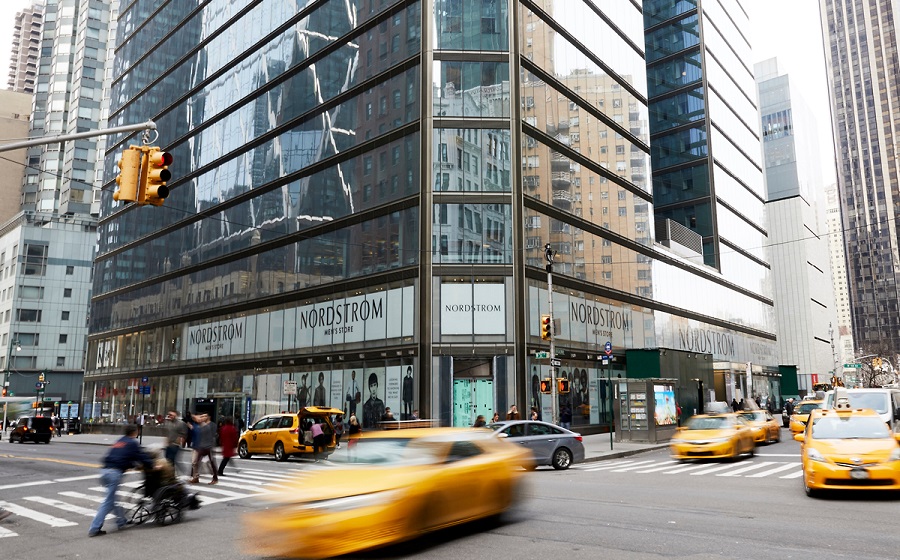Like many in the retail industry, to say nothing of millions of customers, I have always been a big fan of Nordstrom. I’m afraid I can’t quite hold that position today.
Nordstrom’s DNA: Great Merchandise, Great Customer Service, Great Presentation
Way back in the day, as a senior merchant at then powerhouse Mervyns, I asked our menswear buyers to consider emulating the quality of Nordstrom’s men’s basics while at the same time attempting to retail that merchandise at Mervyns much lower prices. This “trade-up/promote-down” strategy was a great success.
Later (but still back in the day), upon joining the Lazarus division of Federated Department Stores first as President then later as CEO, I encountered Lazarus’ adoption of Nordstrom’s “step commission” sales associate compensation program. In a nutshell, the more associates produced in sales in an ever-escalating set of steps, the higher their commission rate. This, in the early 1990s, was a time when Federated was devoted to copying The May Company’s centrally directed merchandising strategy and Nordstrom’s extraordinary customer service regimen. The problem at the time was that Federated did not have a David Farrel, May’s CEO at the helm, and, had no idea that applying straight commissions on a formerly salaried sales force would not meaningfully improve customer service.
At Lazarus, we refused to drop step commissions for straight commissions and focused more on hiring, training and managing the productivity of our associates – just like Nordstrom. There was a battle royal over this, but because Lazarus consistently scored #1 in customer service across all of Federated’s divisions, coupled with having the corporation’s lowest selling costs for six years running, our strategy prevailed.
This intense customer service focus, with all of its underlying DNA, remains a bulwark of Nordstrom’s brand equity to this day. As for store presentation, how can anyone not be endlessly impressed with the clarity, focus, housekeeping standards and timelessness of Nordstrom’s stores? They sparkle and delight. Moreover, their store location portfolio is solid gold: They are sited only in Triple-A malls and highly productive free-standing locations.
The Nordstrom Value Equation and the Birth of the Nordstrom Rack
Nordstrom, to its credit, has steadfastly avoided the high/low pricing free-for-all that its department store competition has become endlessly mired in. They continue to promote and clear merchandise, for the most part, on a semiannual basis. In addition, despite being Seattle based, they have never played the Keystone Plus pricing games that their west coast competitors indulged in to enhance selling margins. Keystone Plus pricing was an offhanded technique used to exceed 50 percent margins, ergo, the term keystone in the retail vernacular, so as to offset west coast freight costs.
Some 30 years ago, the company created an outlet known then, as now, as The Nordstrom Rack. It was designed to facilitate liquidating slow- selling and end-of-season merchandise away from the pristine Nordstrom store. The Rack was also thought of as a store for younger less affluent customers who could, as they became more economically capable, trade up into the Nordstrom store.
Well, The Rack has become brilliantly successful. So much so that there are now many more Nordstrom Racks than Nordstrom stores. In recent years the Nordstrom Rack stores have driven almost all of the company’s volume growth and propped up the company’s profitability as well. Unfortunately, as these Rack stores have grown in number and become more and more proximate to regular Nordstrom store locations, they have begun to siphon off those regular stores’ business. The original Rack business strategy seems to have been highjacked into creating a price-off retail destination for all manner of Nordstrom customers.
Every semester I ask my MBA students, all of whom are millennials, “How many of you have shopped in a Nordstrom store and a Nordstrom Rack?” Almost all have shopped in both. When I ask what their preferences are they almost always reply, “Well I love the store, but the Rack is so much more affordable, and though I love the ambiance and service of the regular store, I love the lower prices of The Rack even more.”
Success breeds competition in retail as in every other sector, and the Nordstrom Rack has had all the usual suspects clamoring for their own piece of the outlet stores pie. Saks, Nieman Marcus and Macys have all piled on thus making it ever more obvious to customers what great values can be had every day at an outlet store versus a regular-priced venue.
Nordstrom in Manhattan: A Quest for Legitimacy or What?
Although there has been a Nordstrom Rack in Manhattan for many years, and the company has an extensive network of successful regular stores in suburban New York and New Jersey, it had reportedly been seeking a Manhattan flagship for decades. Why? Well, smart retailers build stores where their customers work, live and shop — and there are certainly loads of them in Manhattan. But there is no shortage of embedded competition vying for that urbane Manhattanite.
Rather than locate head-on opposite Bloomingdales on the Upper East Side or close to Macy\’s near Herald Square, or even in the new retail complexes in the Financial District or Hudson Yards on the far West Side, Nordstrom decided to go it alone. They opted to locate themselves in a Manhattan store that is a vertical, seven-level, “layer cake” store on West 57th Street in a newly constructed mixed-use skyscraper. Vertical department stores in Manhattan, outside of a few legacy stores like Macys Herald Square, Bloomingdales 59th Street, and Saks Fifth Avenue have virtually all failed. Think A&S in the Manhattan Center, Gimbels East on 86th Street, Altman’s on Fifth Avenue, and now soon to be defunct Lord & Taylor also on Fifth Avenue. There has been an inevitable decline in foot traffic and lack of sales productivity in urban verticals that few retailers, at least in the U.S., have overcome.
To further compound the vagaries of a site that stands basically alone (its nearest retail neighbor is the Time Warner Center at Columbus Circle), the company decided to locate its Men’s Store in an adjacent free-standing location. Was this a play on the action Bergdorf Goodman took years ago to move its menswear business out of its main store to a location across Fifth Avenue? Well, if that’s the case, it’s a downright bizarre decision. Bergdorf Goodman already had a dominant women’s ready-to-wear and accessory business that was bursting at the seams. After years of failing to be able to acquire adjacent real estate, CEO Ira Neimark took a calculated risk and moved Bergdorf’s less-than-dominant men’s business out of the main store and relocated it across Fifth Avenue from the main store. It has turned out to be a brilliant success. Will Nordstrom follow Bergdorf Goodman’s lead? We’ll have to wait and see.
To add another layer of oddity, Nordstrom located its freestanding men’s store in a three-level space whose main street level is not continuous. To traverse from one side of the street level store to the other side, a customer has to go down to the lower level then up, or, up to the upper level then down on an inconvenient Escher-esque floor journey. This is the kind of anomaly an existing retailer sometimes has to accept as a condition of physical growth in an existing location, but certainly not as the basis of new construction. I can’t imagine how the company rationalized this physical impediment. An impediment, I predict, that will haunt the men’s store for as long as it does business in this location.
The Nordstrom Men’s Store: Classicism at its Best or Hipster at its Worst?
Menswear has always been a significant pillar of Nordstrom’s business. Its merchandise point of view has historically been rooted in classic and updated classic fashion. Adult men’s fit and sizing (as opposed to young men’s), high-quality construction and finish at upper moderate to high prices have always been the backbone of the company’s men’s business. But the pre-opening publicity in traditional media such as The New York Times carried none of this positioning or imagery. Incomprehensibly Nordstrom’s ads featured young hipster men. No issue there, but for the fact that they certainly aren’t the store’s legacy customer. And if they are that prospective customer, it’s highly unlikely this L-train crowd is going to shop on West 57th Street.
When the Nordstrom Men’s Store opened this incongruity became even more apparent. Cheek by jowl with Nordstrom’s classic men’s footwear, clothing and furnishings assortments were the young, hip collections featured in the advance marketing. Incongruity is the death of a fashion retailer and this incongruity was nothing short of mind-boggling. Nothing like a generational mishmash as the basis of a store’s assortments to foretell its lack of success.
But then the final straw, for me at least, was a receptacle built into the men’s bathroom on the upper level labeled “Sharps Disposal.” I thought at first that this might reflect some obscure New York City building code ordinance. But it is not. It seems to me to be a reflection of the madness of a retailer trying too hard to be something it is not — and has no business being to boot. It’s as though they are saying, “Come on uptown to our new Nordstrom Men’s Store to sample our hip and cool fashion and great service. And, while you’re here feel free to dispose of your syringe in our bathroom.” In actuality, according to the Nordstrom staff, it’s for meds sharps disposal, although not at all obvious at first sight, which I think puts the Nordstrom brand at risk with signage that has no context.
Ok, maybe this customer service feature is consistent with Pacific Northwest consumer norms and expectations. But New York is not Seattle and this feature, whether statement-making or just poorly thought-out is fraught with misleading the Nordstrom image.
Has Nordstrom, a paragon of virtue, gone astray?



